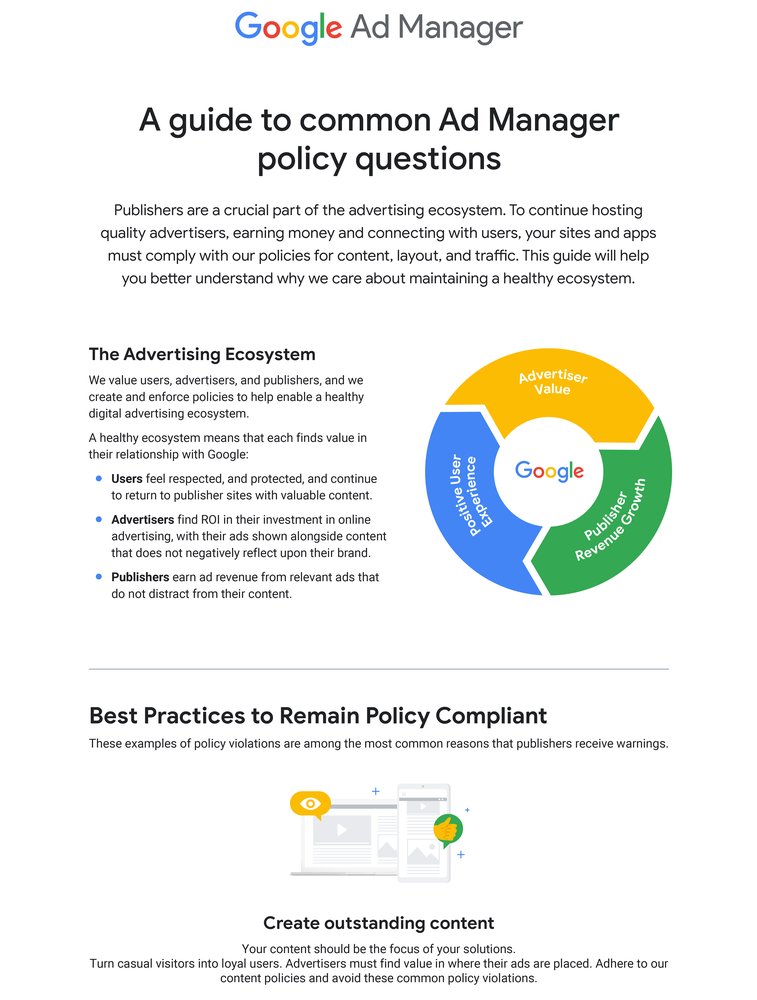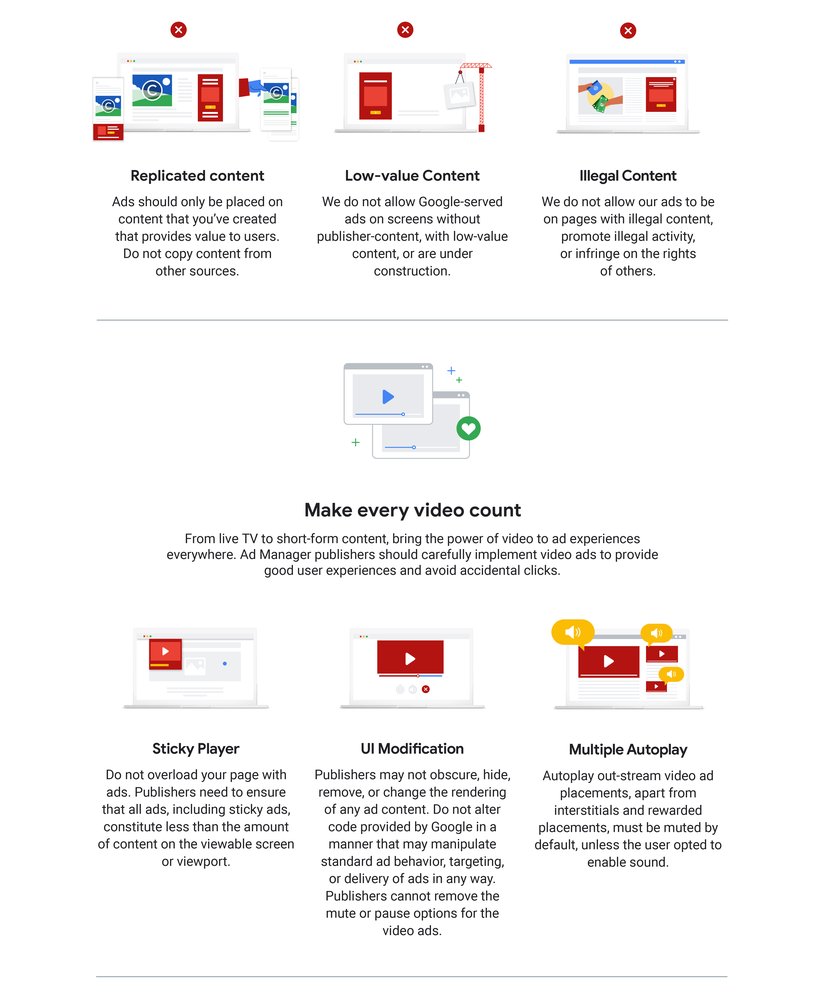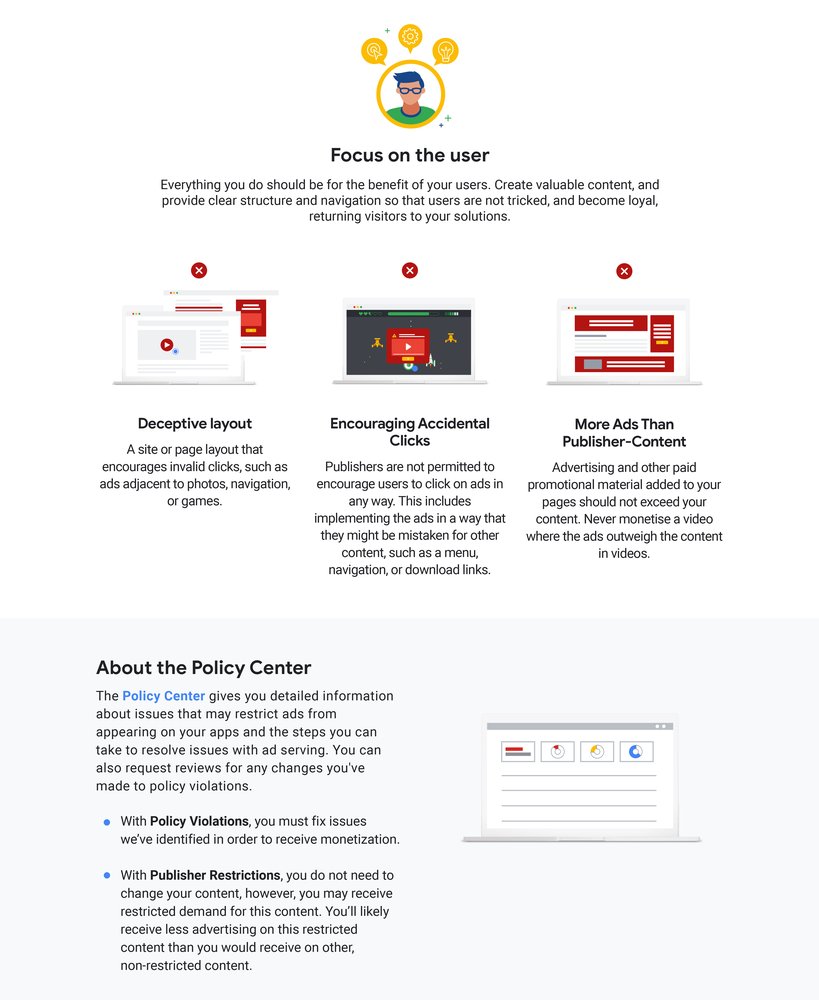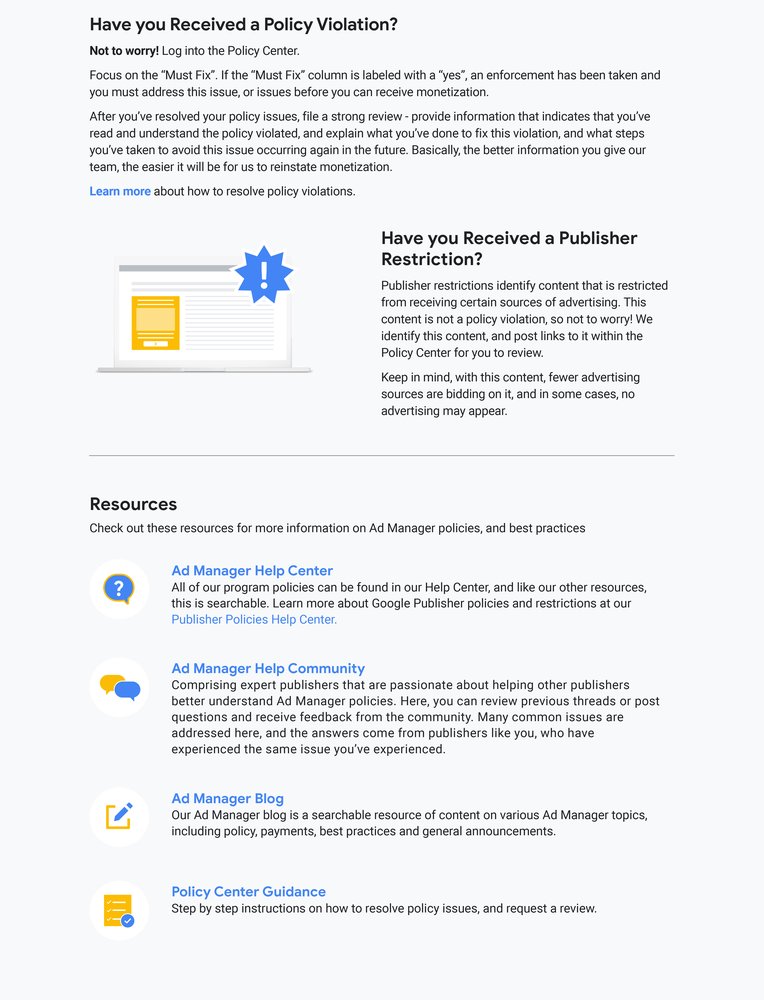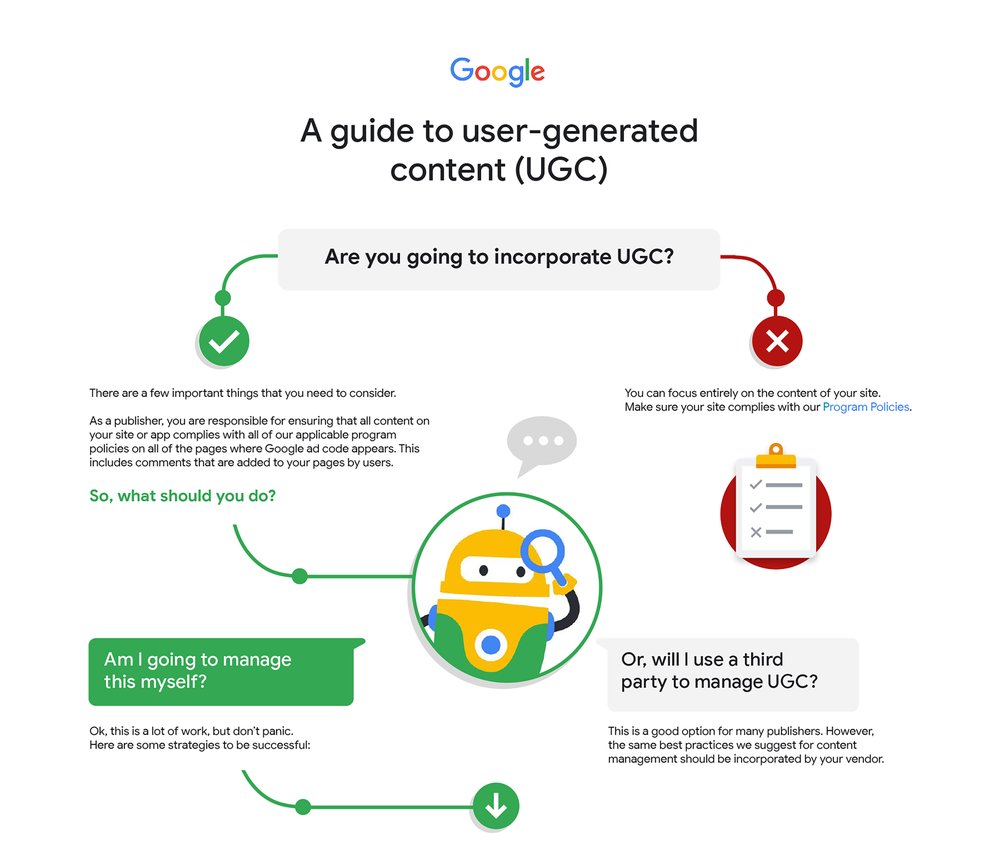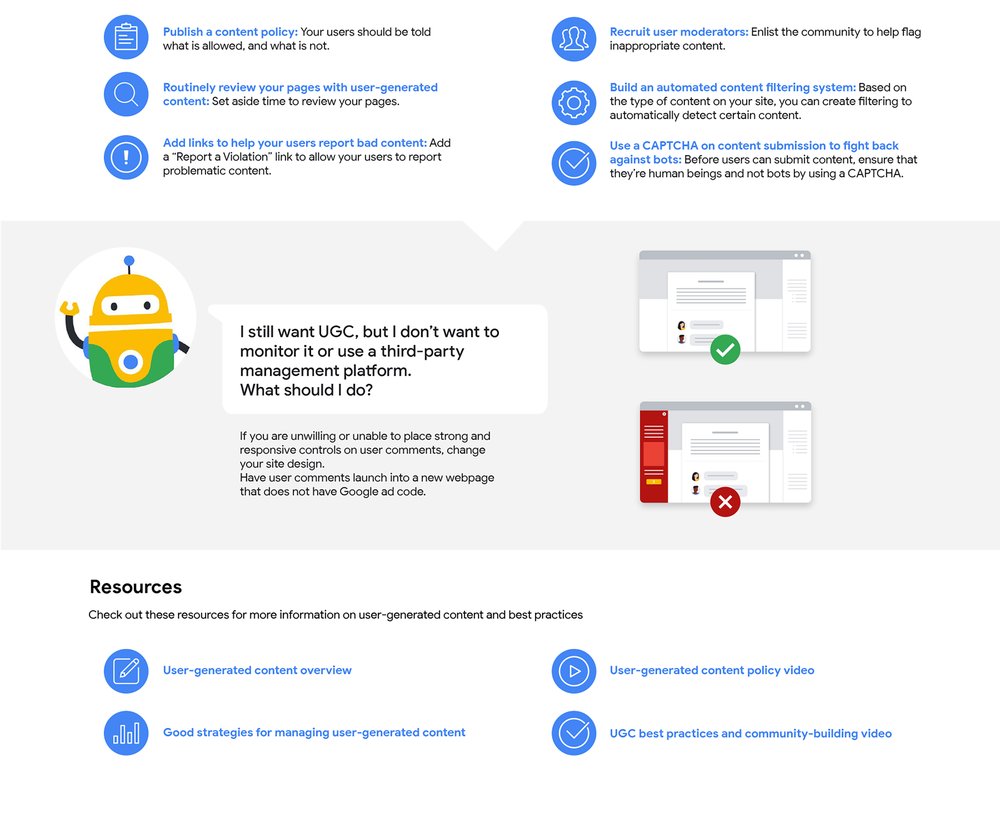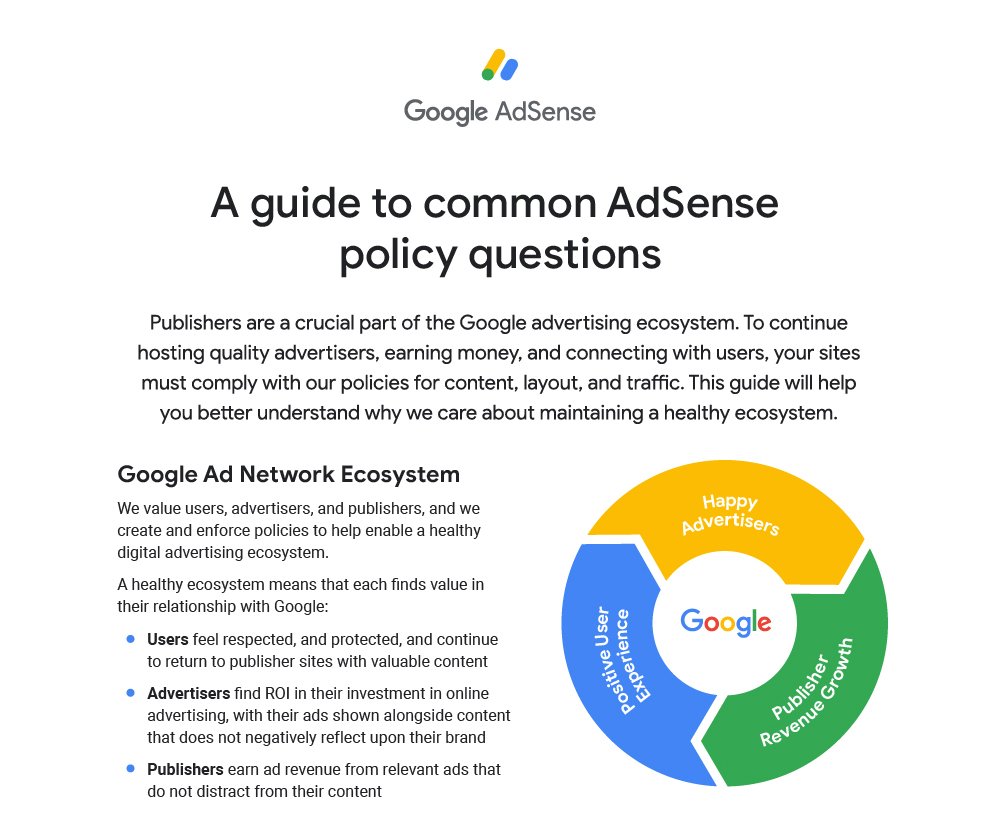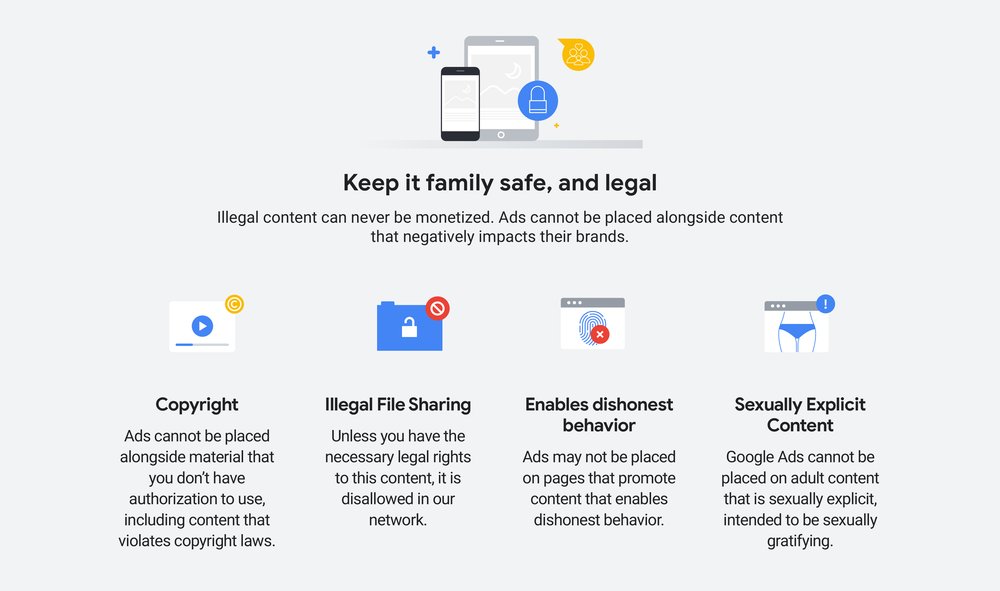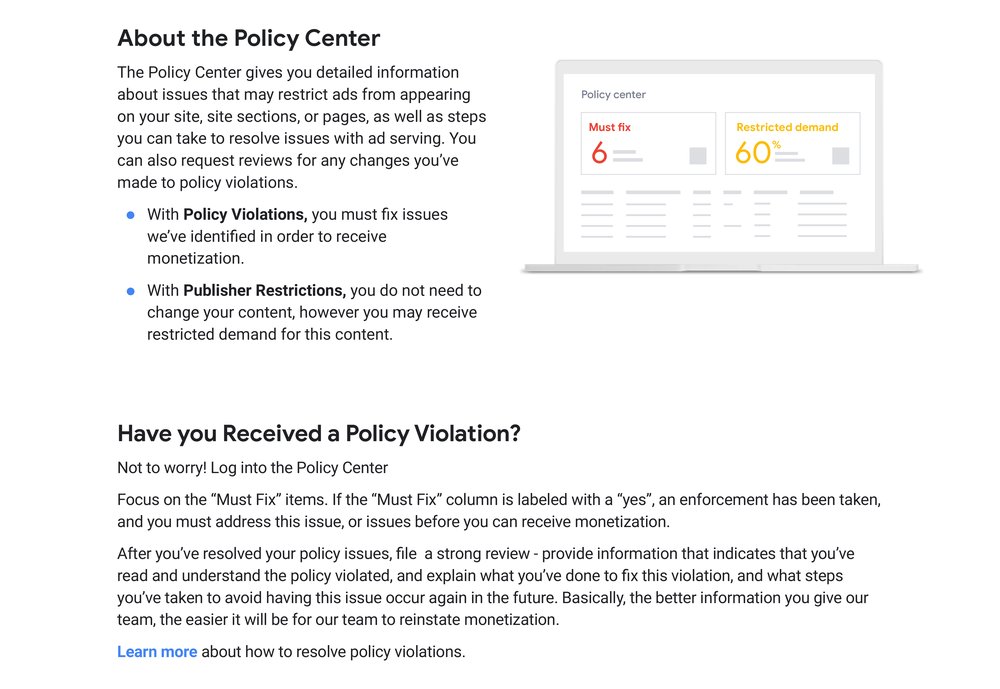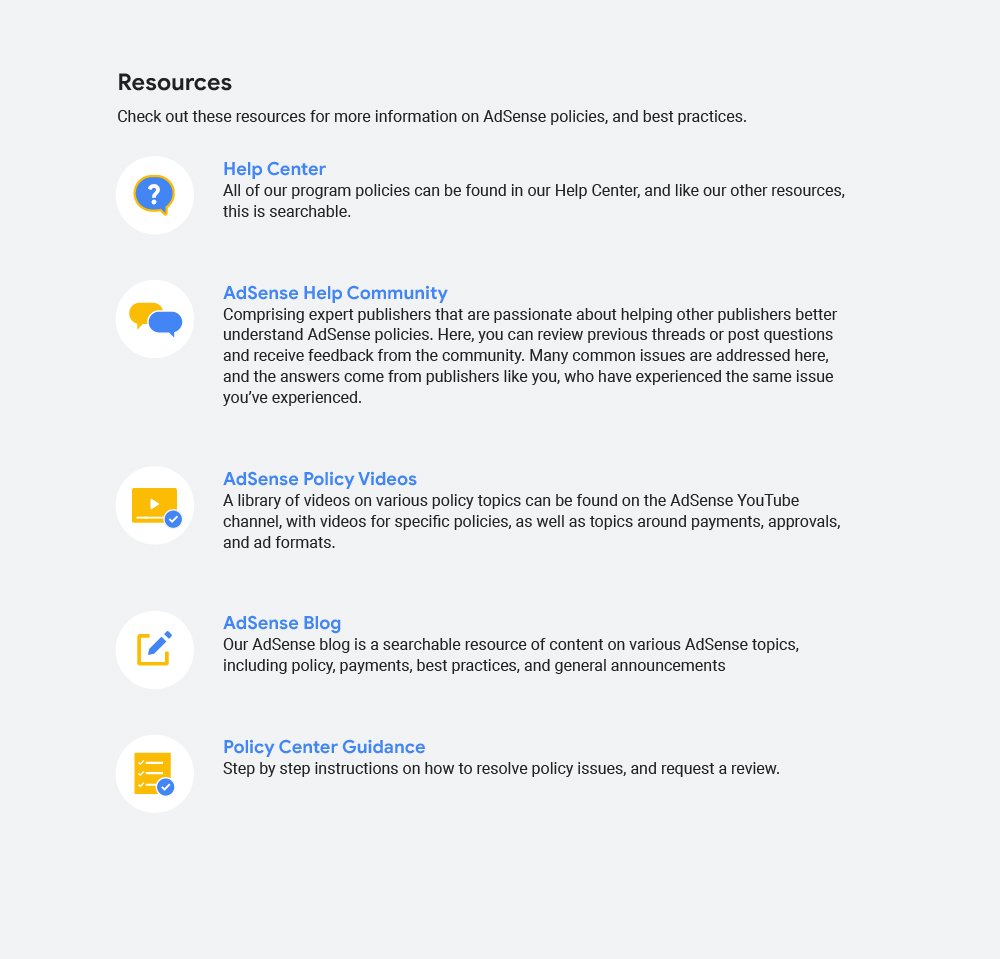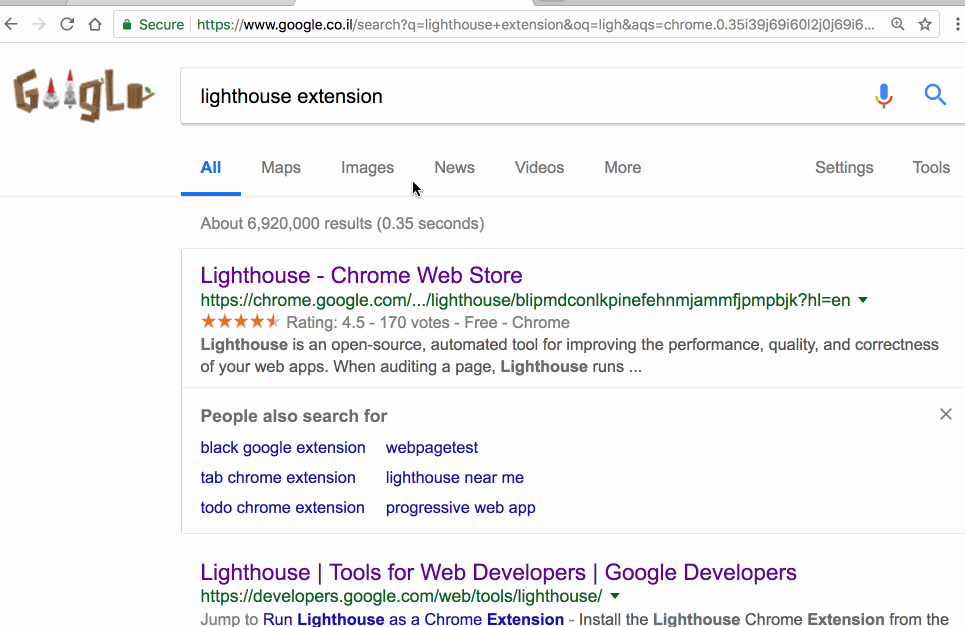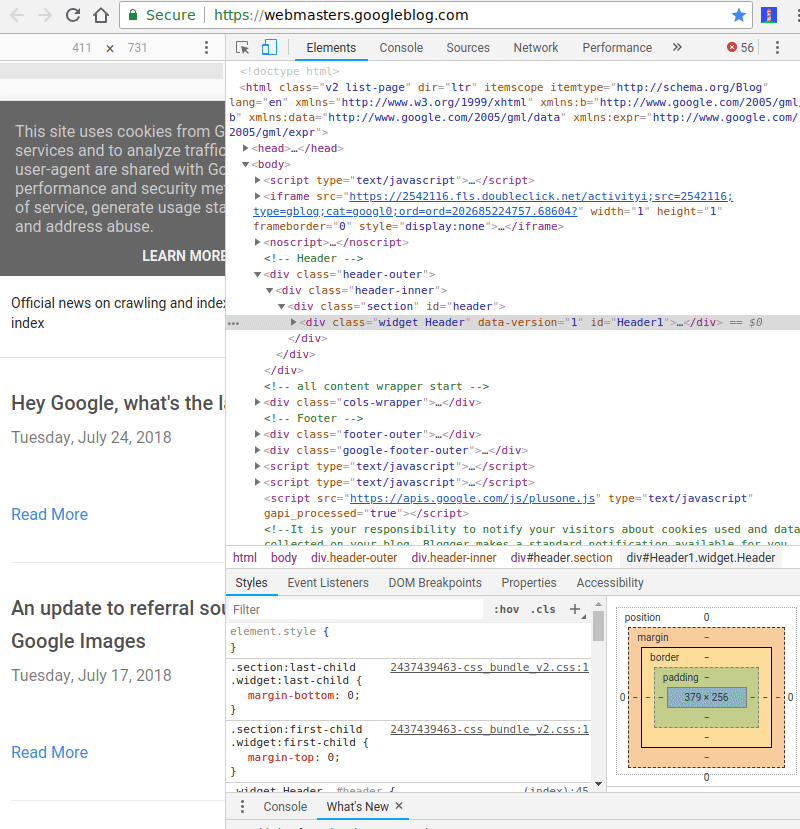We want to do everything we can to help our publishers succeed.
Beyond providing the AdSense platform to monetize content, we provide various channels through which we communicate policies, best practices and product changes to our publishers.
What resources are available? We know that one size doesn't fit all for publishers when it comes to preferred methods of transmitting messages and information. There are several platforms where we provide policy information to publishers.
First, we have our
Policy Help Center. Through the Help Center, publishers can view all AdSense program policies, with detailed information on specific areas such as content policies, ad implementation policies, webmaster guidelines and much more.
Next, we have an
AdSense Forum, comprised of experienced expert publishers that are passionate about helping other publishers better understand AdSense policies. Here, you can review previous threads or post questions and receive feedback from the community.
We also have our
AdSense YouTube channel, a platform we are investing in going forward to address questions for those publishers who prefer videos over text. We plan to update this resource frequently throughout the next year.
For big policy changes, check out our
Inside AdSense blog, where we generally post updates first. We have Googlers from across AdSense posting best practices as well as practical advice to avoid common pitfalls, increase revenue and remain policy compliant. We’ll also provide updates on industry drivers, which may be useful to publishers.
And more recently we’ve also tried to amplify our messaging through the AdSense social channels on
Facebook &
Twitter. Generally, these posts reiterate an update that we’ve posted on our AdSense blog, with a link to that posting.
Lastly, we often speak at conferences and host publisher events at our offices worldwide. At these events, we discuss our program policies and gather in-person feedback from you. This feedback is valuable and has resulted in modifications to products, policies, and policy enforcement to better serve your needs.
Why is it important for Google to provide all of these resources? We know that your first priority is creating content and growing your business. We want to do our part to help you succeed, so we’ve provided multiple platforms to help you understand our policies in the way that suits you best. To put it simply: we want to provide the right resource information, at the right time, in as many places as possible to help you understand our policies.
We also want to make sure you have a number of paths to provide feedback. Our publisher events at Google offices are a great opportunity for this. Additionally, my entire role representing Publisher Policy Communications places a face to our policies, and a feedback loop from you, to the policy team.
Communication involves listening
Communication is a two way street. We’ve listened to your feedback, and created several ways, on several platforms for publishers to better understand our policies. We will always try to interact with you in ways that work best for you. When you succeed, we succeed. Please let us know how we can better communicate our policies to you.
